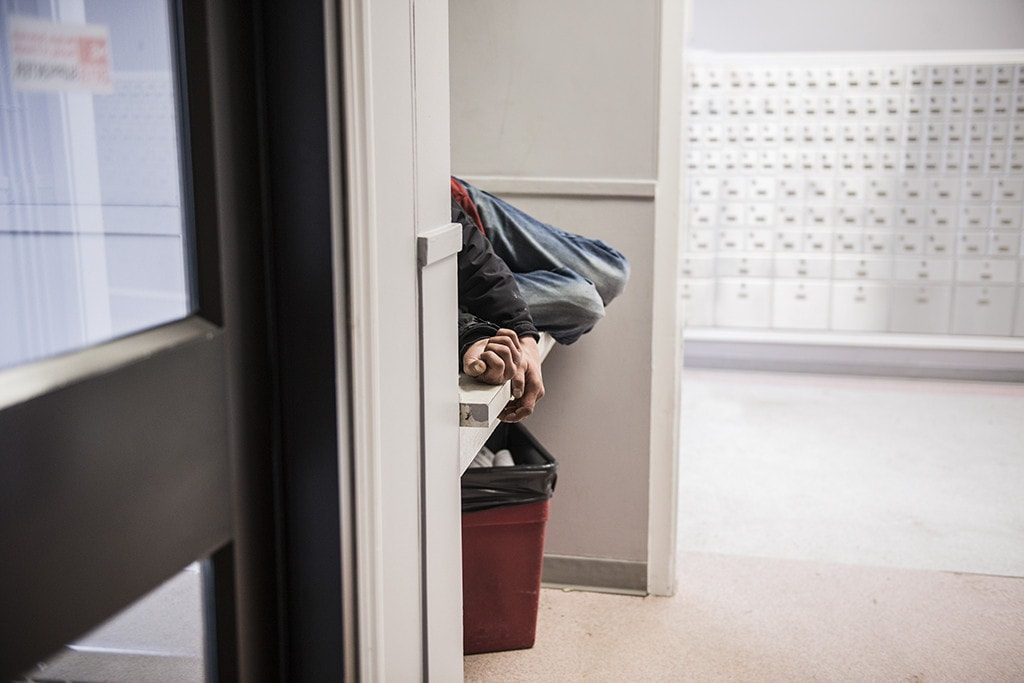Despite efforts from the various parties attempting to house Yellowknife’s homeless population, a chasm has emerged between the GNWT and the City that could derail the much-anticipated Housing First initiative.
On one side, the City-backed Community Advisory Board on Homelessness (CAB) is pushing forward with its plan to house people in private apartments around the city. On the other, the GNWT is redirecting its efforts towards adding semi-independent apartments to Yellowknife shelters.
The divergence in priorities seems to be creating frustration and mutual incomprehension on both sides, while private-sector supporters are increasingly losing patience with the whole thing. And it means the “wraparound services” needed for CAB’s Housing First initiative may not receive GNWT support.
“It seems we haven’t been able to reach consensus,” City councillor Linda Bussey, co-chair of the CAB tells EDGE. “I have a feeling that one of [the approaches] is going to fail, let’s be honest.”
The GNWT’s position
The GNWT has attended CAB meetings since the Housing First initiative was announced in 2014. Last fall, there was even a proposal that the project move forward under the auspices of the NWT Housing Corp with support from other GNWT departments, says Bussey.
Since the election and the appointment of Caroline Cochrane as Minister Responsible for Addressing Homelessness and the Minister of the Housing Corporation, however, the GNWT’s priorities have changed.
In principle, the GNWT supports the Housing First model as part of the “continuum of care.” But Cochrane, formerly the CEO of the Centre for Northern Families, doesn’t place much trust in the Housing First “best practice” of putting people into private market apartments around the City.
Over the years working with the homeless community, she tells EDGE she witnessed many examples of people “self-sabotaging” after moving into transitional housing in order to be back with their friends. “There’s a difference between Indigenous people in the North and south. Our people within the North, especially from the small communities… are very social.”
There are hundreds of thousands of dollars floating around and dozens of people looking at the issue, but there appears to be a profound breakdown in communication between the parties involved.
There’s also the issue of dollars and cents. Despite appointing a Minister Responsible for Addressing Homelessness for the first time, the GNWT has not put any actual new money towards addressing homelessness. In light of this, Cochrane argues, the most effective place to invest limited GNWT dollars is in transitional apartments in existing shelters – she offered the Salvation Army and the Centre for Northern Families as examples – which would be run by the shelters and provide them with income.
“CAB is looking at a different model, and we’re supporting them in that work. But I’m not willing to let this fail,” Cochrane tells EDGE. “If we only follow the City’s model then we’ll have a huge population falling through the gap.”
Where CAB is at
With the GNWT shifting focus away from the CAB proposal, their plan may implode. Only two months ago, Bussey was effusive about the project’s momentum: “It’s very exciting. Our group was losing steam, and it seemed like we weren’t getting anywhere… [But now we’ve seen] we’re not in la-la land, we can do this.”
On the plus side: They have around $300,000 in annual federal funding until 2019, and they’re planning to issue a request for proposals next month for NGOs or private companies interested in running the program.
But without further funding from the GNWT, that $300,000 will only cover an estimated 10 people, says Dayle Hernblad, the City’s Homelessness Coordinator. The GNWT had previously committed $150,000 for in-kind services, says Bussey. But that commitment was never made in writing, and she’s increasingly skeptical that they’ll come through on the promise.
More importantly, the existing federal money cannot be used for clinical services, without which the Housing First model will essentially flop. As is often pointed out, housing people without mental health and addictions support services is a recipe for failure.
“If the GNWT doesn’t come to the plate, we have limited money and we need the wraparound services,” she says. “With programs that have succeeded, like in Medicine Hat, the Alberta Government was involved.”
Communication breakdown
“In all honesty, we’re not sure where CAB is with the project,” admits Cochrane. And that seems to be the rub.
There are hundreds of thousands of dollars floating around and dozens of people looking at the issue, but there appears to be a profound breakdown in communication between the parties involved.
This might have to do with decreasing interest from the GNWT; according to Bussey, “the GNWT has been coming to the CAB meetings for a long time, then all of a sudden it’s pretty minimum… Things have changed: there’s a new government, new priorities, new culture.”
But CAB has also been painfully slow in their progress. Just last week, $120,000 of unspent federal money earmarked for the Housing First initiative had to be transferred over to Hope’s Haven, lest it evaporate at the end of the fiscal year. And while it doubtless has to do with behind-the-scene maneuvering between the City and the GNWT, CAB still has nothing to show for well over a year’s worth of work except the promise of an RFP and a much-delayed point-in-time count of dubious worth.
At the end of April, Cochrane will be hosting a conference on homelessness. CAB has been invited, and it could prove an opportunity for rapprochement. But Bussey, with an RFP for program management due for release next month, isn’t holding her breath: “I’m not going to wait to the end of April to find out we’re not part of it.”
Private sector losing interest
On top of waning GNWT support, the CAB is also dealing with disgruntled private-sector and community interests, frustrated at the pace of progress.
Architect Gino Pin, the de facto head of the Homeful Partnership, says that CAB has repeatedly missed deadlines and has yet to develop a project schedule. He warns that companies like Northern Property, which has offered CAB discounted rates on their empty units, may withdraw if things don’t get going soon.
“Businesses are in business to make money and to carry out their interests,” says Pin. “They want to rent their units… If they can rent it to someone else there won’t be units available to house homeless.”
Right now, Northern Property has roughly 50 vacant units available, says Pin. But that may drop significantly in the coming months and years as projects like the Stanton Hospital build and the Giant Mine Remediation project take off.
“Our approach is for God’s sake, get going, start. Don’t worry about making mistakes, just get going,” he says.
Despite everything Bussey is still confident the project will move forward: “It will succeed: if I have to do a fundraising campaign, I will.”







